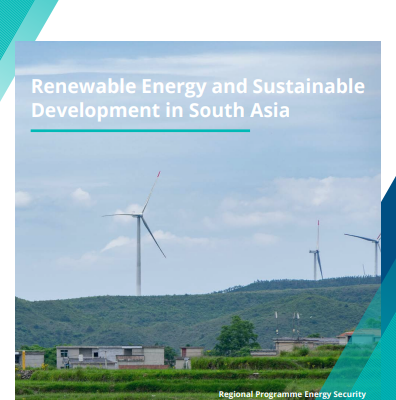Energy supply is a key factor for economic development in South Asia. With their energy production primarily based on imported fossil fuels, South Asian countries are vulnerable to volatile prices on international energy markets. In the wake of the COVID-19 economic recovery, high energy prices have impacted various South Asian sectors — froIowa State Football Uniforms OSU Jerseys ohio state jersey 49ers jersey asu jersey 49ers jersey fsu football jersey brock bowers jersey OSU Jerseys Iowa State Football Uniforms College Football Jerseys Iowa State Football Uniforms asu jersey ohio state jersey custom football jerseysm power generation and industrial activities to transportation.
The region’s heavy reliance on fossil fuels is also reflected by the energy sector being South Asia’s largest greenhouse gas emitter. The decarbonization of the region will play a vital role in achieving global climate goals and net-zero emissions as well. Renewable sources of energy are relevant for a transition to a decarbonized energy supply. For South Asia, an expansion of renewable energy also enhances energy security by reducing dependence on fossil fuel imports. Furthermore, decentralized renewable energy production allows some South Asian countries to provide electricity to the most remote parts of their populations for the first time. It is therefore crucial to accelerate the expansion of renewables in the region.
nike air max grigie e nere
mercatino canne da pesca usato amazon
adidas handball spezial test
bonnet echarpe enfant garcon
adidas formel
p mobil póló
αιθεριο ελαιο μεντασ
mochilas para mujer 2018
nike air max grigie e nere
jordan travis jersey
botas estilo dr martens con plataforma
τσαντες χιαστι trussardi
air jordan 11 gym red
biotin collagen conditioner
houston texans andre johnson jersey
But a sudden transition to renewable energy has some challenges. Insufficient grid infrastructure requires a substantial infrastructure upgrade to enable the integration of renewables given their intermittent nature. Grid capacity should also be able to support the development of regional, cross-border energy markets for renewable energy trade. Lack of financing and limited technical capacity are just two of the challenges further complicating the sustainable development of renewables in the region. Generally, South Asia has significant potential for renewable energy — be it hydropower, solar pv or wind. The region’s diversity, however, requires a closer look in order to identify opportunities and understand the specific challenges.
In order to address this context, Regional Programme Energy Security and Climate Change Asia Pacific of Konrad Adenauer Stiftung (KAS RECAP) in cooperation with the Consortium of South Asian Think-Tanks (COSATT) has initiated this publication with papers from Bangladesh, Bhutan, India, the Maldives, Nepal, Pakistan and Sri Lanka of the South Asian region to analyze the status quo and future opportunities for renewable energy development and expansion as well as greater regional cooperation. It also provides concrete recommendations on how policy and improved institutional arrangements can promote renewable energy, and thus sustainable development, in the region. This publication was launched on 10th October 2023 at a ceremony held at the Asian Institute of Technology (AIT), Bangkok, Thailand, which was jointly organized by KAS, COSATT and AIT. Following are some extracts of the abstracts of articles appearing in this publication:
Bangladesh
Renewable energy is becoming an increasingly important aspect of Bangladesh ‘s energy mix, given its potential to support sustainable development and reduce the country ‘s reliance on fossil fuels. Bangladesh, a densely populated country with limited natural resources, has historically struggled to meet its energy needs, leading to energy shortages and frequent power outages. However, in recent years, the government has made significant efforts to promote the development of renewable energy, and the sector has shown promising growth.
Bhutan
Bhutan has rigid environmental and ecosystem conservation laws. A lengthy history of low‑carbon growth and energy security can be found in this nation. With regard to the impact of climate change on its water and hydropower resources, Bhutan is now exploring alternative renewable energy resources. Detailed analysis and pilot projects have been carried out and the country is presently prioritizing solar energy. This will help to reduce the import of electricity during the winter season and also generate supplementary energy in the grid which can contribute to national revenue. Friendly policies to allow regional energy integration will play a pivotal role in supplying the surplus energy to areas with high demand.
India
The essay from India on “Renewable Energy and Sustainable Development in South Asia,” looks at the three questions; what measures has India taken to achieve renewable energy? what progress has India made in accomplishing SDG‑7? and what are the challenges that India faces at national, regional, and global levels?
Maldives
The Maldives, a country that has access to universal electricity since 2008 relies heavily on imported diesel and isolated island-based grids which have driven up the prices. Even with government subsidies, electricity tariffs in the Maldives are the highest in South Asia. Because of the insignificant size of the landmass, from an economic and practical point of view, the use of solar power and wind energies is not viable as the Maldives consist of small islands. Therefore, the trend now is to use solar energy on the ocean.
Nepal
Despite being endowed with abundant sources of renewable energy, Nepal continues to heavily rely on traditional fuels to fulfil its domestic energy needs. Although there has been a decrease in the use of traditional fuels from 85 per cent to 69 per cent 132 in less than a decade, the dominance of biomass and fossil fuels remains prevalent. Consequently, Nepal has a low electricity consumption rate of merely 177 kWh per annum in 2018, in stark contrast to the global average of 3132.15 kWh.133 According to a 2019 report from the National Statistics Office, Nepali citizens have nearly doubled their consumption of gasoline over the five‑year period from 2014 to 2019, leading to an alarming 90 per cent surge in fuel consumption. The country ‘s petroleum demand has been growing at a rate of ten per cent per year due to the significant increase in the number of vehicles, contributing to an expanding trade deficit and detrimental environmental repercussions.
Pakistan
Pakistan’s power sector has grown over the years, but it is still striving for the affordable, reliable and environmentally sustainable energy. Pakistan’s energy problems have aggravated manifold by the Russia‑Ukraine conflict and the global supply crisis. The fuel import bill surged to 23 billion US dollars in FY2021‑22, a 105 per cent increase from the previous financial year. The country has tremendous potential to generate solar and wind power. The Alternative and Renewable Energy Policy 2019 (ARE 2019) is set to increase the share of renewable energy capacity to 20 per cent by 2025 and 30 per cent by 2030. This study looks at Pakistan’s potential and growth in renewable energy, institutional and policy framework, reasons for slow growth and challenges faced by this sector. It also explores the possibility of regional cooperation in renewable energy and makes some practical recommendations to enhance green energy development and cooperation. The research relies on mix method, document analysis and interviews with key informants in the field.
Sri Lanka
Energy Cooperation and Cross Border Energy Trade (CBET) are two key elements that could be utilized by
Sri Lanka to achieve energy sustainability while realizing the targets set for mitigating the adverse impacts of climate change and for high economic gains. South Asian Region possesses a rich renewable energy potential whilst India has taken a lead in regional energy cooperation and CBET. In such a backdrop, it would be interesting for Sri Lanka to reap the benefits of CBET through renewable energy cooperation. This article aims to present Sri Lanka’s national perspectives on the challenges and opportunities for regional energy cooperation, realizing the potential of regional cooperation in renewable energy trade in South Asia while presenting the wind, solar and biomass potential of the country along with the related advantages, issues and the way forward.
It is expected that this publication would contribute to enhancing the understanding of renewable energy and sustainable development in South Asia and proves useful to academics, researchers and practitioners alike. It could be downloaded from the website of Konrad Adenauer Stiftung through the following link: https://www.kas.de/en/web/recap/single-title/-/content/renewable-energy-and-sustainable-development-in-south-asia-1
(This article was prepared based on the content of the publication; ‘Renewable energy and Sustainable Development in South Asia’).
Written By Thilinakumari Kandanamulla.




